Four and a half years ago you came into this world. Two pushes and there you were, under water—a water birth beauty. Eight minutes after our midwife arrived to our home. But not a second too late or too early. You came in your time.
I brought you onto my lap, as I sat with my knees bent up. I looked at you, and the name came to me—my Buddha baby, all cheeks. In that moment, you looked nothing like Tate. That shouldn’t have mattered. I mean it didn’t matter, but I still thought that. Comparisons always try to steal moments away.
I held you. We all did. Your grandparents met you in those precious after-birth moments. I gently made my way from birth tub to bed, riding an oxytocin high like no other. You fell asleep across my lap, just in time for your big brother of two years old to wake from his nap and come into our room. Oh, he was so proud. “Baby Curl” had finally arrived, while he slept soundly. He sat next to us, staring at you, finally a big brother.
It was all so…perfect.
But perfect is a heavy word. An impossible goal. An unfair label. Perfect is meant to bring comfort and calm to a moment, but it is actually a Trojan Horse— a neatly wrapped package of anxieties and expectations, ready to explode or implode at the first sign of the unexpected.
And so we began our perfect with you, Coral. Two days at home. It seemed like a dream. And then on the third, lying next to me, I found you blue and not breathing. My heartbeat racing. Panic and fear ensuing. 911, help in route.
Your breath did return to you. Blue face returned to pink. But your breath was a sneaky shape shifter, stopping and returning (only with help from the nurses) too many times for me to count. Too many times for my heart to handle. My perfect seemed so far away. You seemed so far away. Three weeks in the NICU, and then an answer.
Dup15q.
Oh, Coral. Those words. The website. The video. I wanted to die. Literally and figuratively.
As I lie on the bed at the Ronald McDonald House, my heart just exploded with grief—pouring out through rivers of tears. A lifetime of subconscious stereotypes of those with disabilities, a pregnancy full of expectations for your life (for our life, for MY life), and a shattered parenting ego, all collided at once. BOOM. CRASH. A perceived death of my perfect.
And that’s all that rang in my head in those first few hours, days and weeks. These days I wish I could go back to tell myself what I know now, but hindsight isn’t meant for the present moment.
I’m so sorry, Coral, that I didn’t see YOU then—a parenting blunder to have missed your unique wonder. Comparison, the sneaky snake, just did not want to let go.
But now, 4 and a half years into your life, I can’t imagine life without you. I don’t mean that in a “my heart would break without you” sort of way. Of course it would. But I mean that in a far different, more literal way. Your life source, your being, your soul has created a life I never could have imagined. A life I never dared to imagine. You have pulled me so far from my perfect and plopped me down in the life you carve out each day for yourself.
Your mannerisms. Your preferences. Your musical tunes. Your vocalizations. Your giggles.
They are all truly uniquely, you.
You always have to carry something around, usually two things, one in each hand. Maybe it’s a toy car and a bracelet or a string and a small musical toy. Your “special treasures.”
Sometimes you choose to carry the largest and loudest musical toy around, swinging it as you walk. It (unintentionally) bangs into obstacles along your path. You have a fierce determination when faced with true motivation.
Orange. Anything and everything that is the color orange gets your first and undivided attention.
Sitting in a chair you reach for your brother’s hand and pull it towards your neck. “Tickle me!” Head back, eyes closed. Belly laughs. Squeals. And again you reach for his hand. “More!”
Tiger teeth. This is the name we’ve given to your face when you clench your teeth together and pull your lips back. Sometimes you’ll squeeze (or try to pinch) my hand while you make this expression. Other times the expression comes and goes as you jump.
On other occasions, you will be standing right next to me—leaning your weight into my legs as I sit on the couch. Your lips will begin to curl up into a smile. A soft giggle falls from your lips. You look so happy. I’m left to only wonder: What is this most joyous secret of yours?
And when you jump, you JUMP—high on the trampoline, in place thirty times in a row, or as you move around the dining room. Tongue out, toes slightly angled inward, happy Coral jumps.
Or sometimes you twirl and spin. Spin and spin and spin. Head back, stopping only for a brief second to regain your balance and then back to spinning.
Other times you bring me one of your toy cars. It’s your way of asking me to spin the wheels. Spin and spin. Your bring the toy so close to your eye I wonder how you can even see it. But you do.
You have music toys that cycle through different tunes. Each press of the button leads to a new song. Your favorite song will play. At its completion, you will quickly begin pushing the button again. One, two, three, four pushes and you stop right after the first note of your favorite song. You find your tune every time. More quickly than I ever could. With a musician’s ear. It’s pure magic.
When you hear the Sesame Street song playing on the TV, you stop and look up. Once Elmo appears you find two of your favorite Elmo figures—maybe a book and a toy. You carry them over to the TV and stand right in front. Soaking in all the Elmo time you can.
When bath time or pool time comes, you dive for the water more quickly than an actual fish out of water. You are my breath holding, bubble blowing little mermaid.
You love your books, especially your favorite ones, like I Love You Stinky Face. Sitting in your room, you somehow turn exactly to your favorite page. It’s the one where the mom sits next to the swamp. “I love you my slimy swamp monster.” You just stare at that page, maybe the images dance through your head. I can only wonder.
I find you climbing anywhere and everywhere these days. It seems like you are drawn to balance on the most precarious pieces of furniture using the most precarious of stances. Our very own Free Solo.
Speaking of furniture, you find great delight in pushing all of our dining room chairs around. Down the hallway. Over to the sliding glass door. Your brother says you are going to be a furniture mover when you are older. I guess we will have to see.
You get into EVERYTHING. Baby safety lock Houdini. Our tippy toe reaching, long arm stretching clever little girl. Silverware drawers, mixing bowls, containers of crayons and pencils, LEGOs, and a little splish-splashing in the fish tank. Our curious Coral. You keep us on our toes.
When we lift you up, you wrap your arms so tightly around us. Big bear hugs. After we say, “Kiss, kiss,” you lean your cheek or your lips towards our lips.
My Coral Buggy cuddle bug.
And gosh, Coral, you are so beautiful. Big, bold, blue eyes beautiful.
Coral, sometimes you may wonder why I seem so far away. At times, things can feel so heavy and overwhelming for me. Advocate. Therapy. Behaviors. Communication systems. Epilepsy worries. It can overwhelm. But I promise you that I will always make my way back. I’m always here. I just need a moment to remember what really matters—you—not any of these other things.
In the same way, there are moments when life seems so challenging for you. Frustrated screams. Bites. Pinches. I wish I could “save” you from these communication and sensory struggles.
But then I remember—you don’t need any saving, my beautiful girl.
To save you, rather than to empower you, is equivalent to viewing your life with pity instead of dignity.
That is why I advocate for you to have access to a variety of life experiences and therapies—so you can develop your independence and find what makes you happy.
I refuse to believe that the solution is to turn YOU into ME—that somehow my narrow neurotypical life experience holds the key to happiness for you.
Your accomplishments are grand— the inchstones and milestones. We will always celebrate those with you. But those moments aren’t YOU. They never will be.
Instead, I will always find YOU in your giggles, your jumps, your spins, your curiosity and your hugs and kisses.
4 and a half years of discovering your interests and gifts. A lifetime left to go. I can’t wait to watch who you become.
My Coral fish.
Keep swimming—up stream or downstream. This is your life. This is your river.
I’ll just be the one in the canoe, trying to keep up—trying to navigate your river with as much grace as you do.
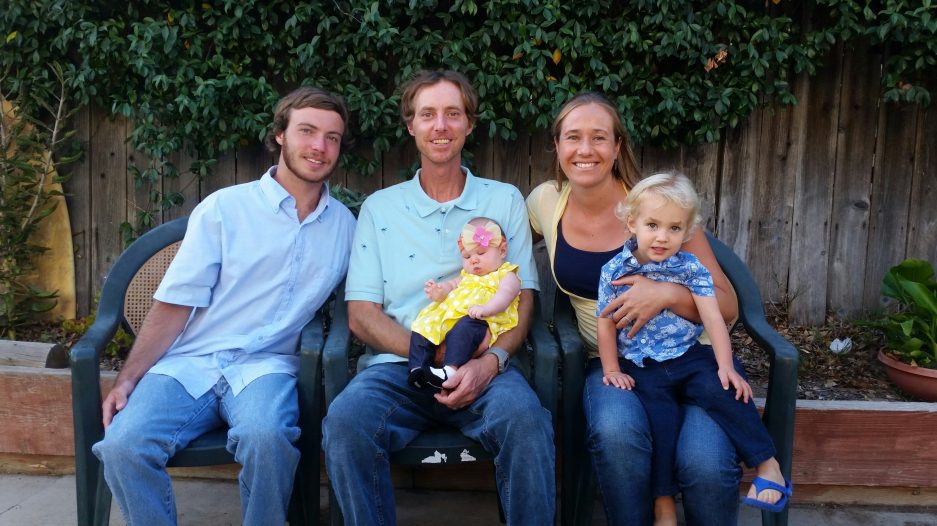





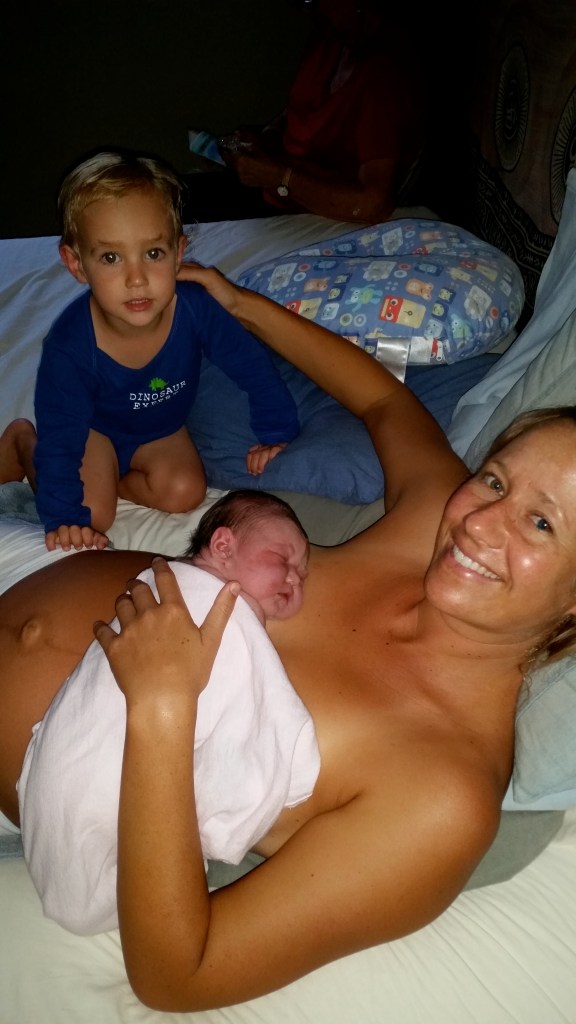

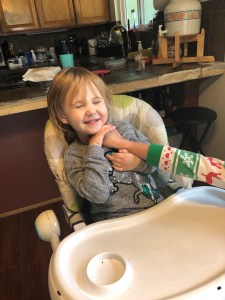

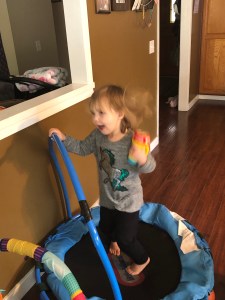



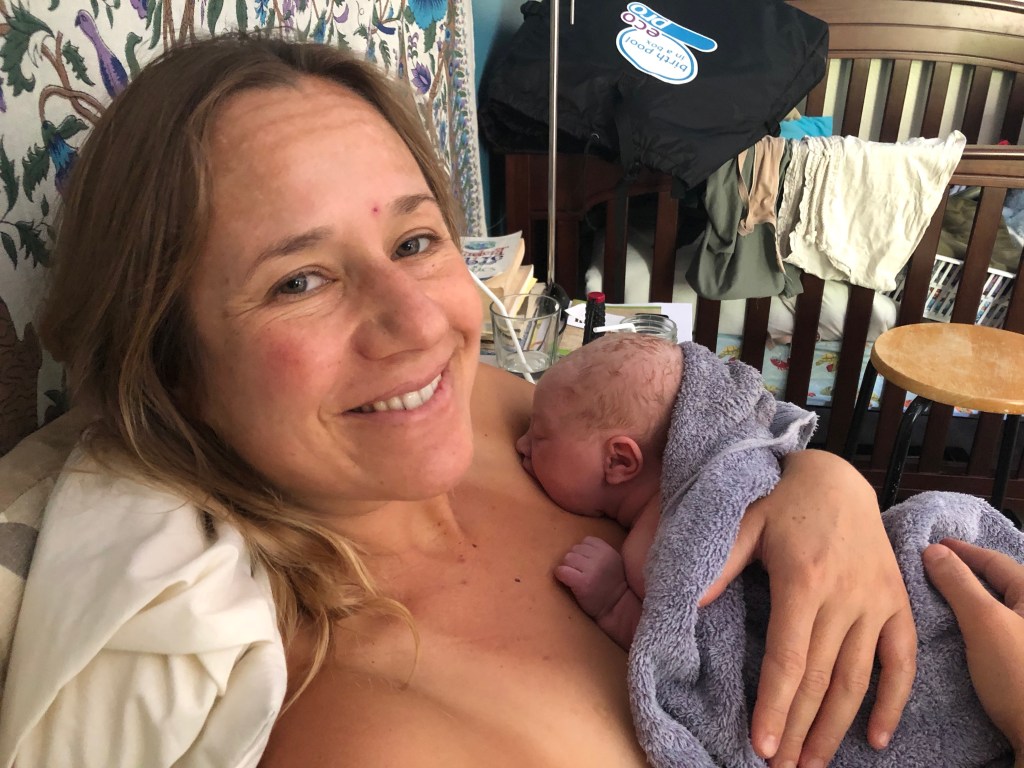






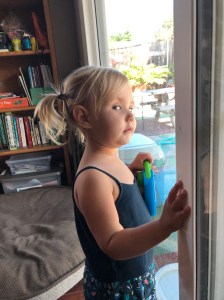
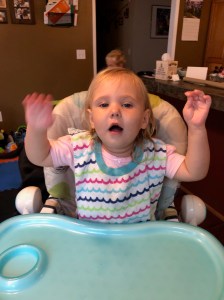
 One of her favorite things to do is to look me in the eyes and then to lift my hand up to my mouth so I will modulate the sound by moving my hand on and off my mouth. She often imitates this action and sound afterwards.
One of her favorite things to do is to look me in the eyes and then to lift my hand up to my mouth so I will modulate the sound by moving my hand on and off my mouth. She often imitates this action and sound afterwards.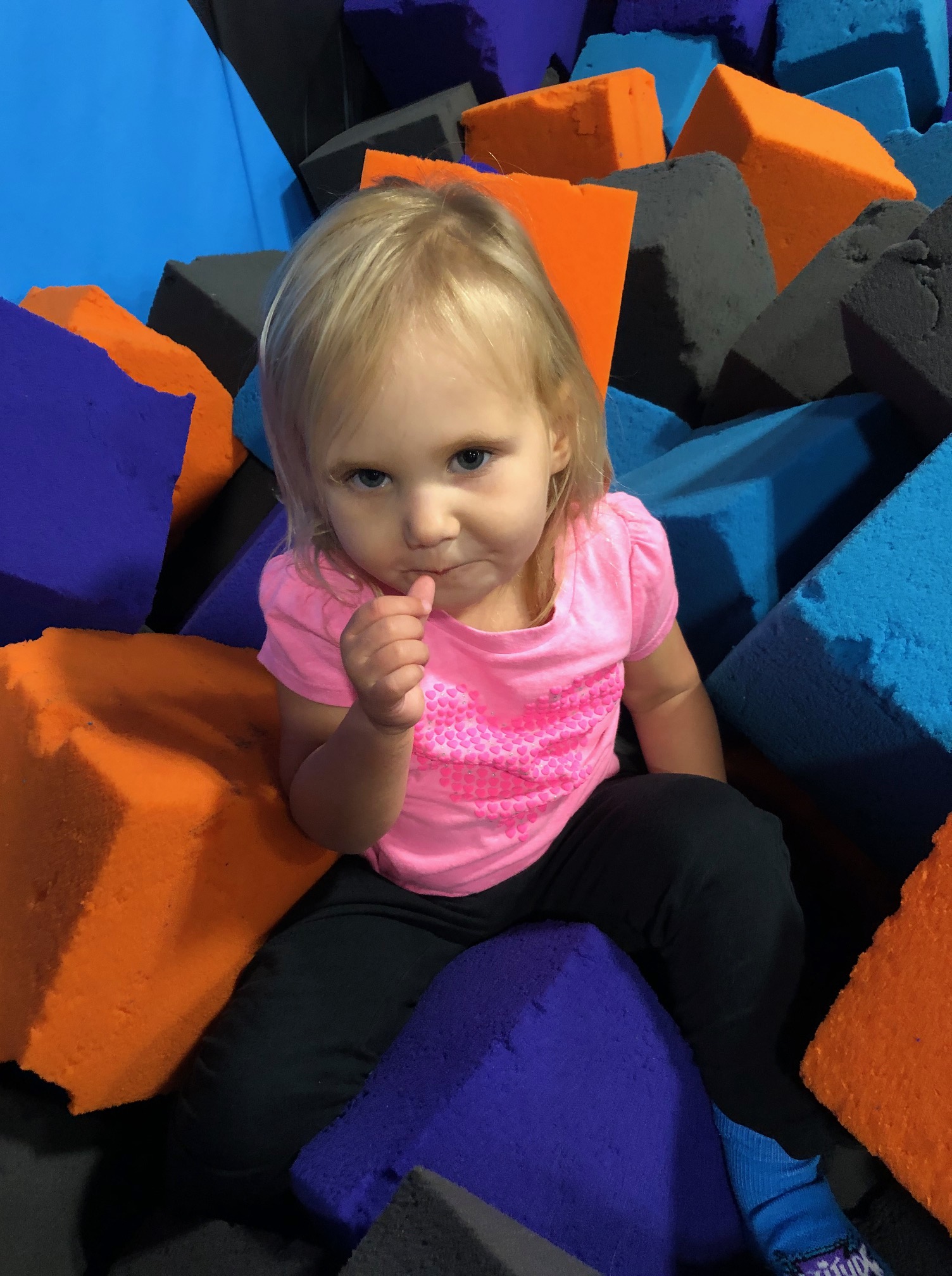





 She loves “Doe A Deer”. She likes her giraffe music toy.
She loves “Doe A Deer”. She likes her giraffe music toy.










